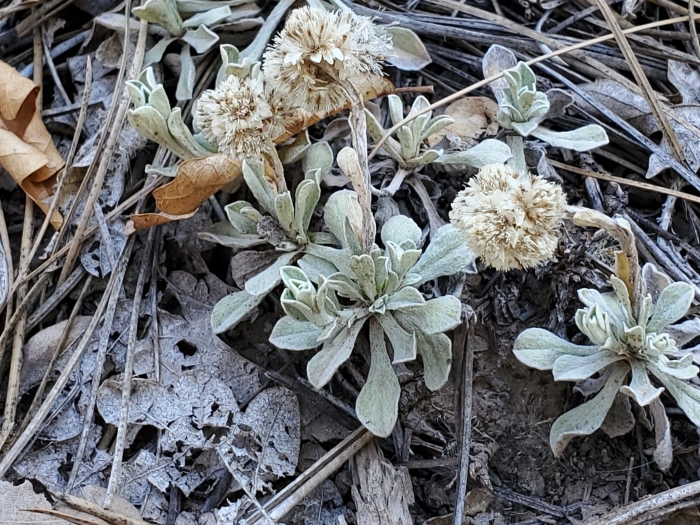Small-Leaf Pussytoes
(Antennaria parvifolia)
Small-Leaf Pussytoes (Antennaria parvifolia)
/
/

Craig Martin
Public Domain

































Estimated Native Range
Summary
This species is valued for its drought tolerance and ability to thrive in poor soils, making it a suitable choice for rock gardens, xeriscaping, and restoration projects. Its flowers are modest but can add texture and interest to garden settings. Small-Leaf Pussytoes is also appreciated for its wildlife value, as it serves as a larval host for the American Painted Lady butterfly. Cultivation requirements include full sun to partial shade, and it is adaptable to a range of soil types, provided they have slow to medium drainage. While generally low-maintenance, it can be susceptible to root rot in overly moist conditions.CC BY-SA 4.0
Plant Description
- Plant Type: Herb
- Height: 0.3-0.5 feet
- Width: 0.5-0.7 feet
- Growth Rate: Moderate
- Flower Color: Cream
- Flowering Season: Summer
- Leaf Retention: Evergreen
Growth Requirements
- Sun: Full Sun, Part Shade
- Water: Medium, High
- Drainage: Slow, Medium
Common Uses
Bank Stabilization, Bee Garden, Bird Garden, Border Plant, Butterfly Garden, Deer Resistant, Drought Tolerant, Fire Resistant, Groundcover, Low Maintenance, Rock Garden, Salt Tolerant, Street Planting
Natural Habitat
Open woodlands, meadows, and rocky slopes
Other Names
Common Names: Nuttall’s Pussytoes, Little-Leaved Pussytoes, Low Pussytoes, Small-Leaved Pussytoes, Rocky Mountain Pussytoes, Little-Leaf Pussytoes, Small Leaf Pussytoes, Smalleaf Pussytoes, Antennaire À Petites Feuilles, Nutt.’s Pussytoes, Smallleaf Pussytoes
Scientific Names: , Antennaria parvifolia, Antennaria aprica, Antennaria rhodantha, Antennaria latisquamea, Antennaria aureola, Antennaria aprica f. brunnea, Antennaria aprica f. roseoides, Antennaria aureola var. roseata, Antennaria obtusata
GBIF Accepted Name: Antennaria parvifolia Nutt.